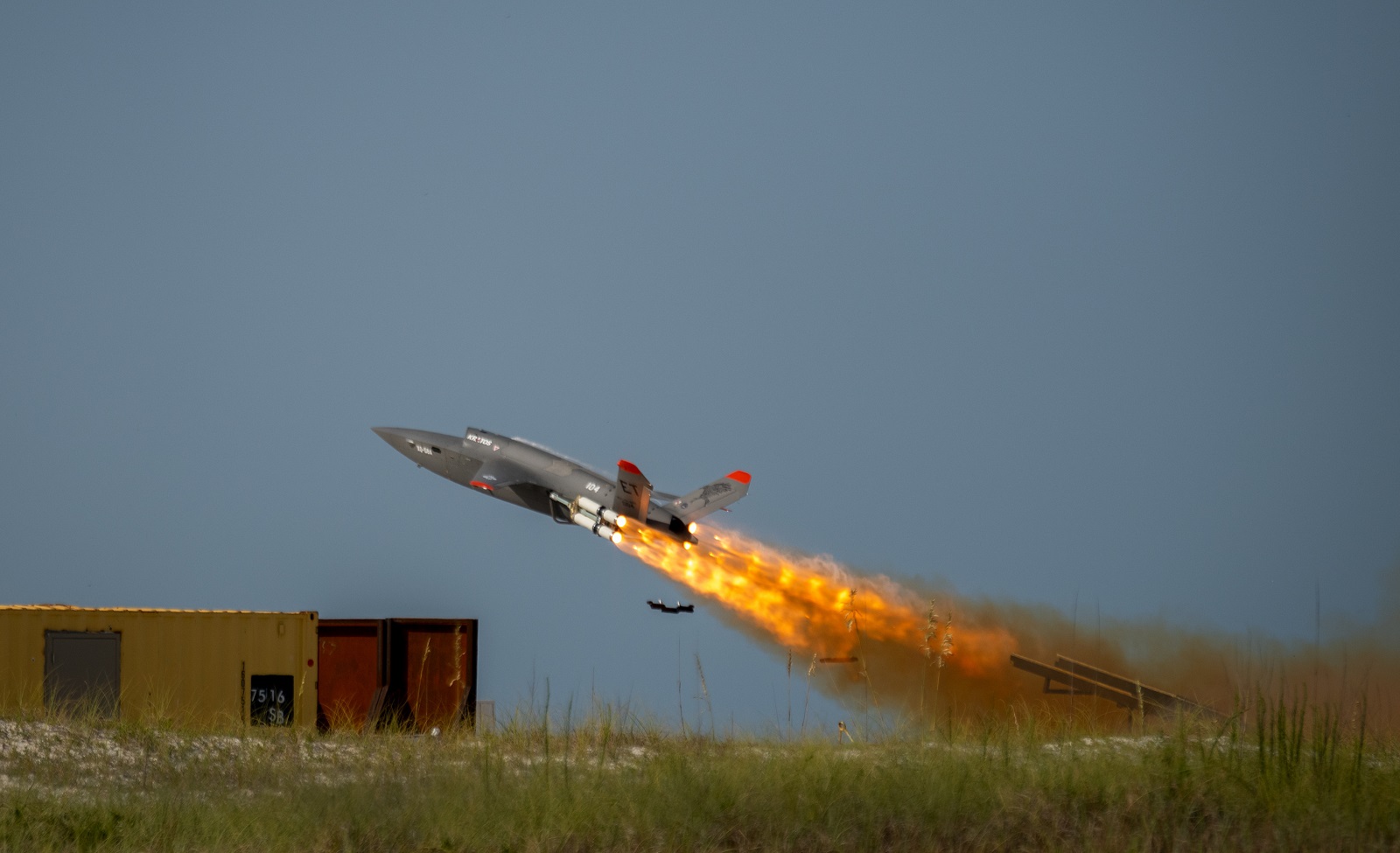The U.S. Air Force demonstrated artificial intelligence-enabled air combat during a successful launch of an XQ-58A Valkyrie here August 22. This flight helps develop a trained tactical autonomy algorithm from simulation through flight test on a high-performance, uncrewed air vehicle. AI algorithms, developed and trained by the Air Force Research Laboratory’s Autonomous Air Combat Operations were integrated into an XQ-58A and flown in the Eglin Gulf Test & Training Range. Trained through deep reinforcement learning, the AI algorithms used neural networks to fly the live air vehicle against simulated opponents using simulated mission systems and simulated weapons.
“AI will be a critical element to future warfighting and the speed at which we’re going to have to understand the operational picture and make decisions. AI, autonomous operations, and human-machine teaming continue to evolve at an unprecedented rate, and we need the coordinated efforts of our government, academia, and industry partners to keep pace,” said Brig. Gen. Scott Cain, AFRL commander.

“The opportunity to fly alongside this trained AI-piloted air vehicle really set into stone this technology is very real and here to stay,” stated Capt. Tyler Brown, lead test aircrew. “I feel we are at an inflection point of an exponential curve for the application of AI. It is imperative we understand the power of AI, its strengths and weaknesses, and that it is implemented in the right way.”
“AI testing requires combining new and traditional test and evaluation techniques. The team has a lot of lessons learned that will be used to inform future programs,” said Ryan Bowers, lead test engineer for the effort.
The flight test, executed by the 40th Flight Test Squadron and supported by AFRL and Kratos Unmanned Aerial Systems, was a continuation of the successful July 25 test flight. The previous flight demonstrated an AI-enabled, high-performance, uncrewed air vehicle for the DoD and demonstrated standard aviation tasks, navigation tasks, and safety guardrails for risk mitigation and safety build-up. The DoD is committed to the responsible employment of AI. To achieve responsible use of AI requires teaming of developers and users of AI-enabled autonomy working in collaboration with acquisition specialists.
















